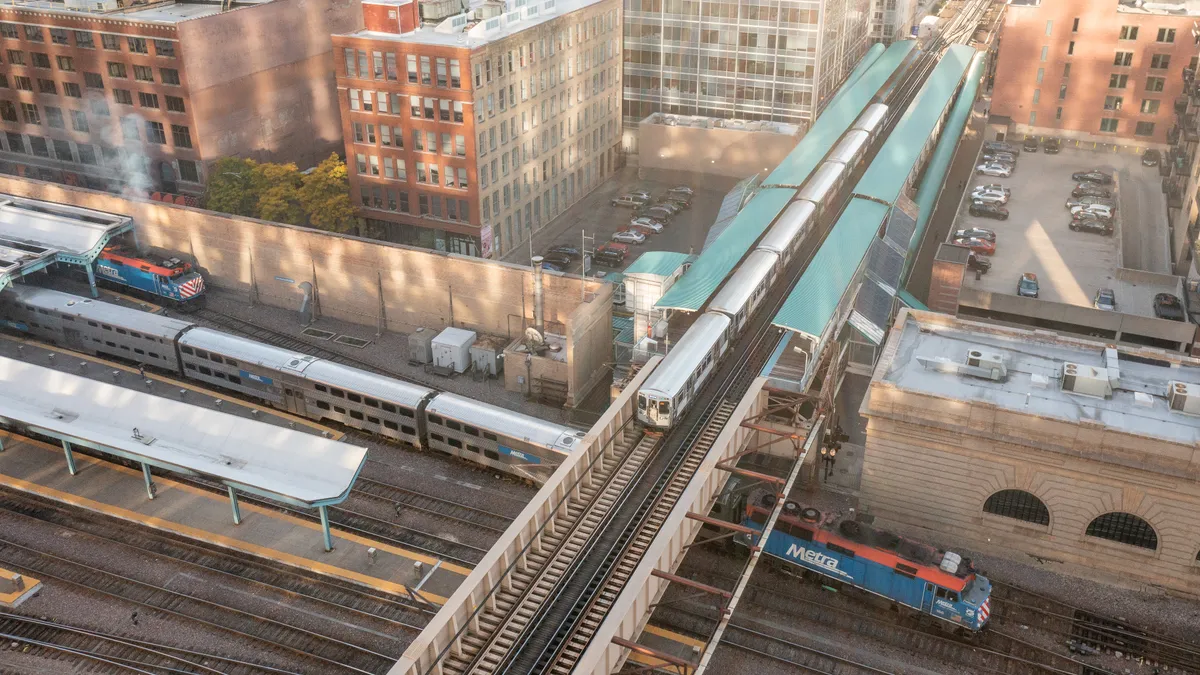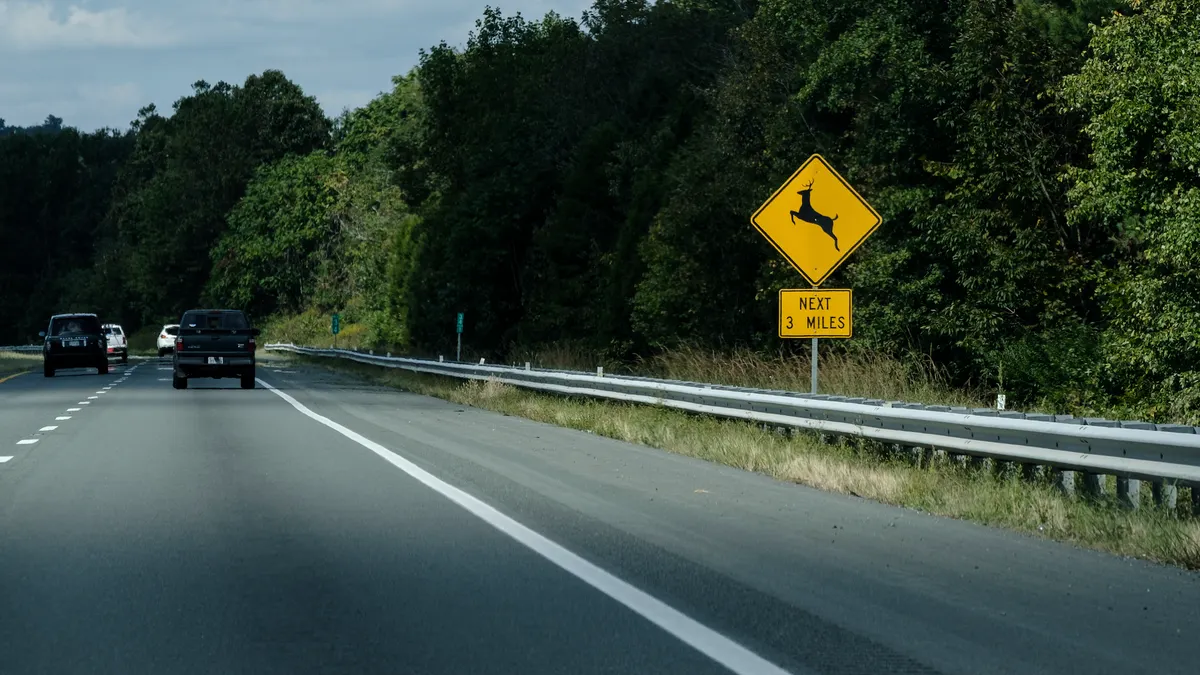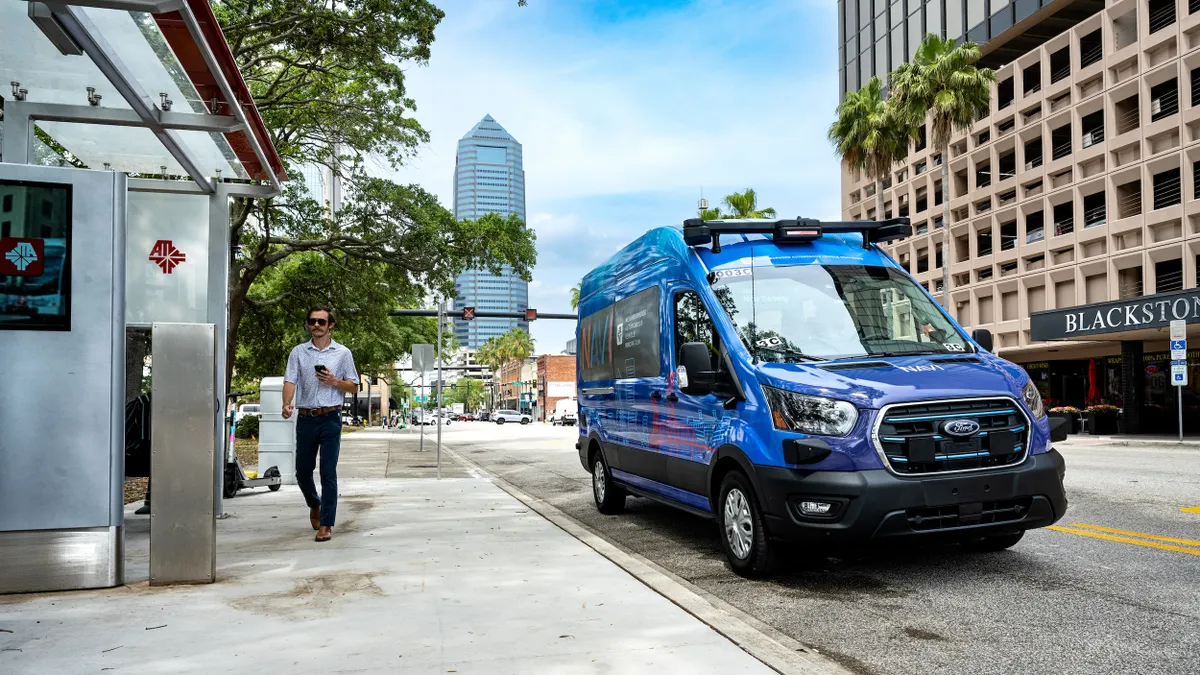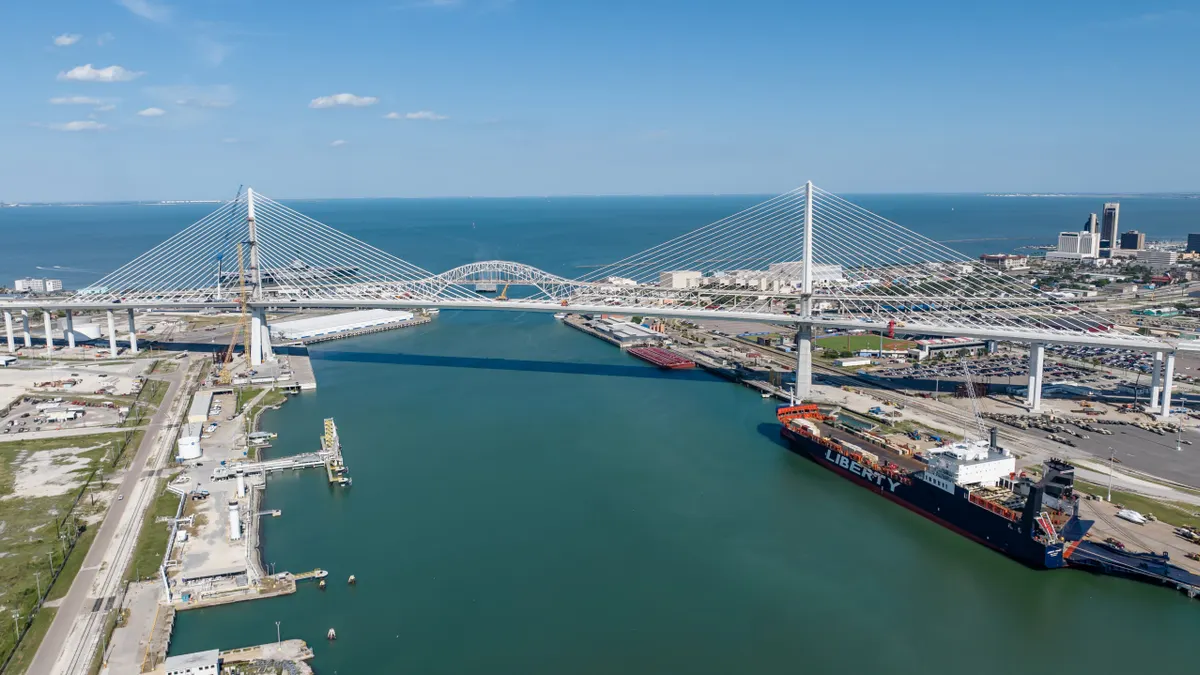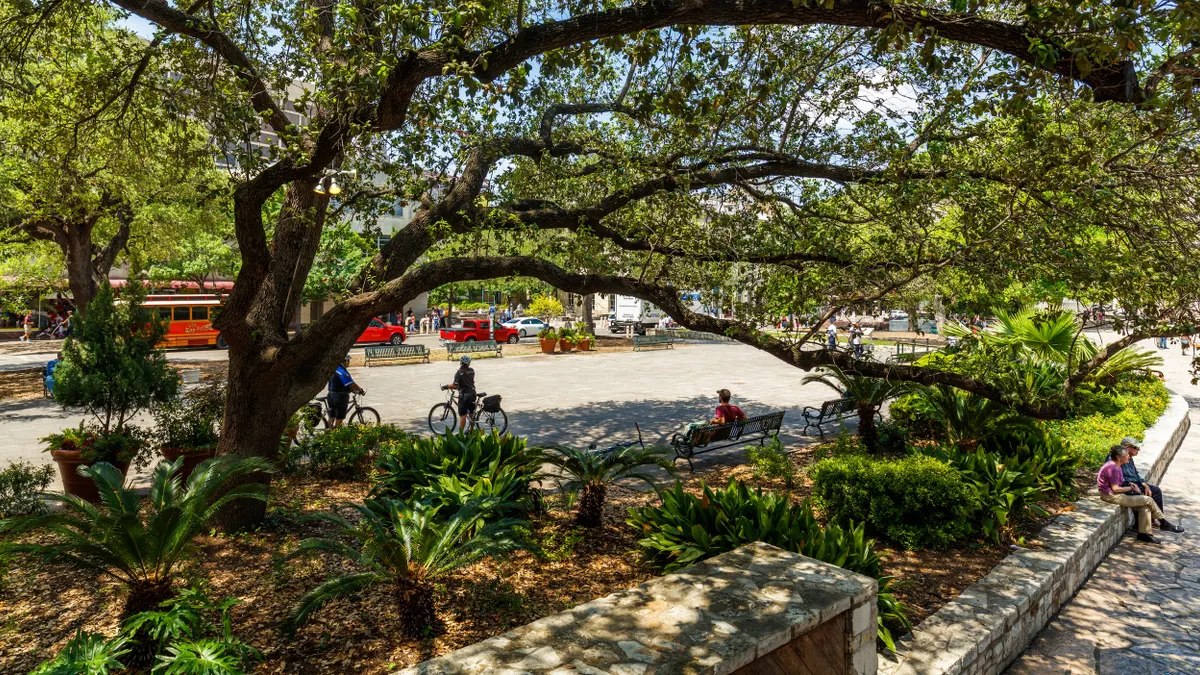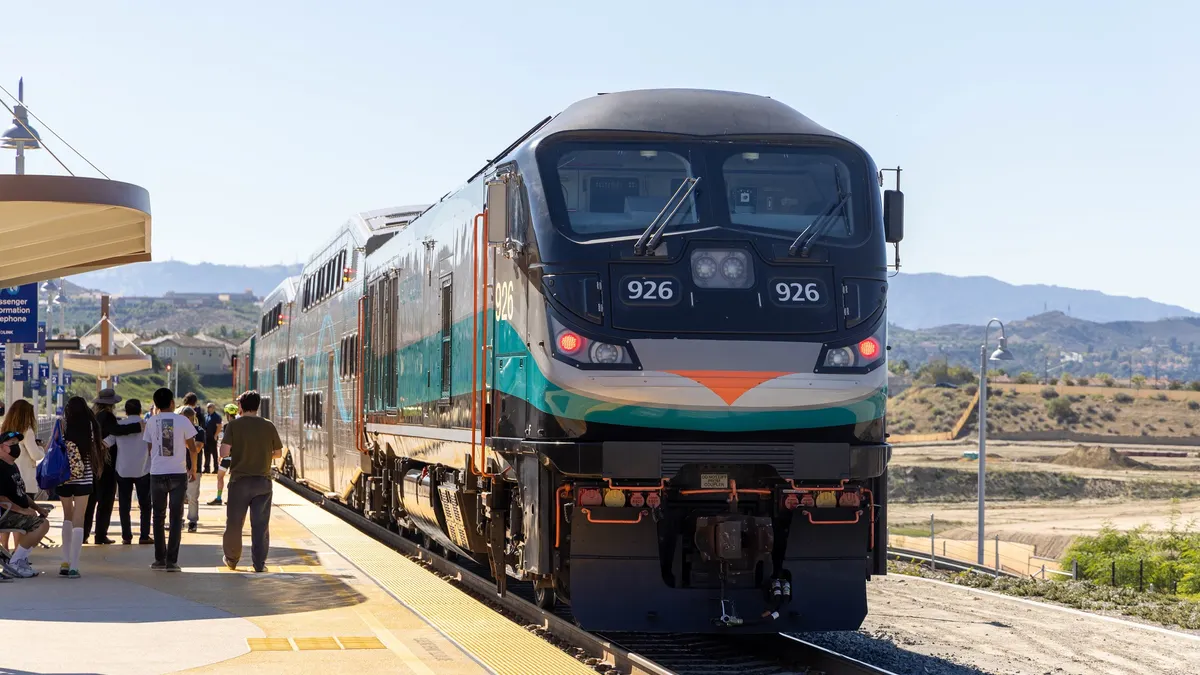The Chicago transit system could run off a fiscal cliff in 2026 as remaining federal COVID-19 pandemic relief funds run out, leaving a $730 million budget gap. That could force substantial fare increases, drastic cuts in service or both, according to the Regional Transportation Authority of Northern Illinois, which oversees the Chicago Transit Authority, Metra commuter railroad and Pace suburban bus system.
“Our reliance on fares is not a sustainable model,” said Leanne Redden, executive director of the RTA. “Increased public funding is going to be essential.”
Unlike other U.S. transit systems, the three Chicago-area agencies must cover half their operating budget from rider fares. In December 2021, the Illinois General Assembly waived that requirement through the end of 2023 in response to the pandemic. But ridership is stuck at about 60% of pre-pandemic levels, Redden said.
“Ridership is probably not coming back to those same levels that they were pre-pandemic,” Redden added.
That grim assessment led to the development of a new five-year strategic plan for the RTA. A draft of the 83-page document was released earlier this week and will be open for public comment through Jan. 9, 2023. Redden said they want to get feedback in time for the RTA’s board of directors’ February meeting, when she hopes the plan will be adopted.
The 14-point plan features an advocacy agenda and a list of action items. Advocacy issues include finding additional funding for transit operations and infrastructure that reduce the Authority’s reliance on the farebox. Action items aim to address public safety concerns, accessibility, customer convenience and transitioning to a near-zero emission regional transit system.
“Transit, we fundamentally believe, is really critical to maintain a vibrant city,” Redden said. In preparing the strategic plan, the RTA hired consultants to analyze the overall value of the region’s transit service. The consultants estimated that for every dollar the region invests in transit, it receives $3.86 in overall benefits and supports 126,000 local jobs.
Redden believes that to support the local economy and address climate and equity issues, “we have to double down on the investment in public transportation.”
But the decision is not in the hands of the RTA. It’s in the hands of elected officials, she said. They need to “work with us and collectively come to an agreement as to how we want to do this,” she added.
Failing that, the RTA paints a stark picture for Chicago transit riders. One-way fares for Chicago Transit Authority elevated trains, Metra trains and Pace buses would double. That would make Chicago’s trains and buses some of the most expensive in the country, the RTA states in the plan document.
But such high fares would also be self-defeating. Fare increases of this magnitude “would drive down ridership and negate additional revenue brought in by higher fares,” the plan states. Such fares could be unaffordable for many riders, especially those who rely most on public transportation.
Chicago is not alone in facing a dire future as reduced transit ridership cuts into fare revenue. Last month, the New York State comptroller warned that the New York Metropolitan Transportation Authority would need to raise fares, cut service or find an additional source of revenue by 2025.
Redden said the three Chicago transit agencies are ready to work on the plan as soon as the board approves it. “The next step is work will begin on trying to execute on that plan and deliver some of the elements that we talk about and articulate in the plan,” Redden said.
Chicago residents have enjoyed the benefit of public transportation since the first elevated train in the city started running on June 6, 1892. Today, the region’s transit system is one of the largest in the nation. Approximately 7,500 rail and road vehicles carry more than a million riders a day.
Despite the daunting challenges facing Chicago transportation officials, “We are very optimistic,” Redden said. “There’s a lot more work ahead. We recognize that the plan is really just sort of step one.”



